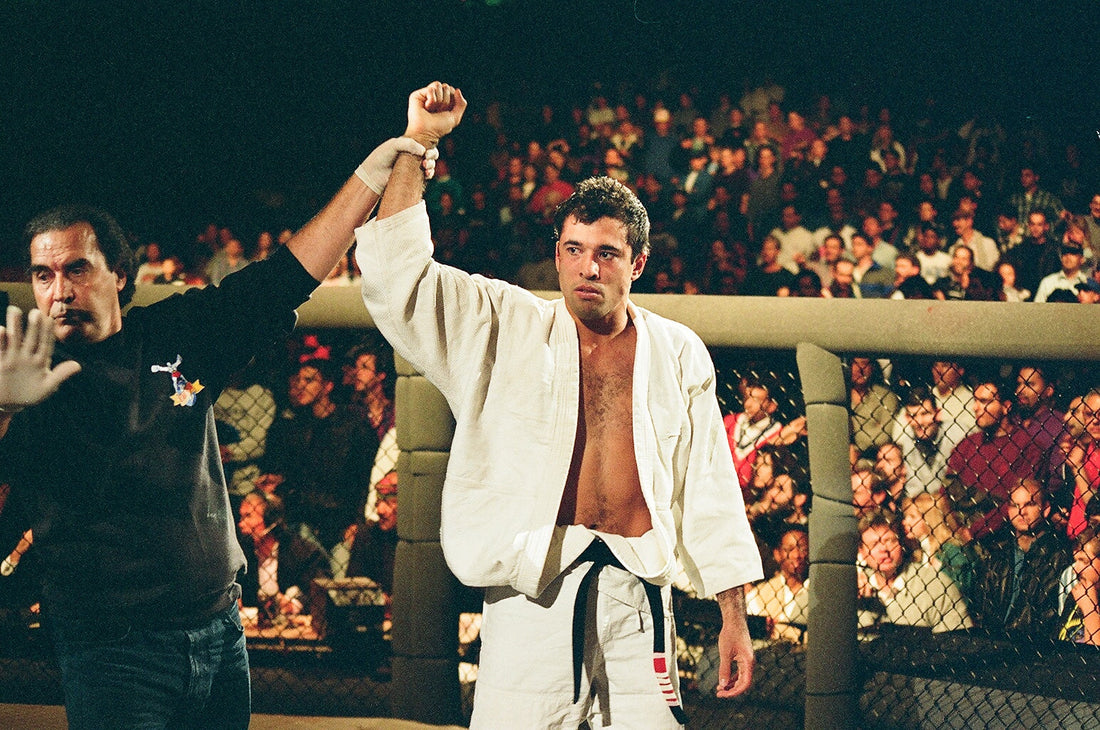
The Rise of the UFC: From Bloodsport to Global Phenomenon
Share
Alright, buckle up, folks. If you’ve ever watched two warriors step into the Octagon, felt that surge of adrenaline when Bruce Buffer screams, “IT’S TIME!” and seen legends go to war—then you know UFC isn’t just a sport. It’s a modern-day gladiator arena.
But how did we get here? How did we go from the wild, no-holds-barred brawls of the ‘90s to multi-billion dollar pay-per-views headlined by some of the most elite athletes on the planet? Let’s break it down.
The Wild West: UFC’s No Rules Beginnings (1993-1999)
Picture this: It’s 1993. There are no gloves, no weight classes, and no real rules. Just pure, unfiltered combat. The UFC was the brainchild of Art Davie, Rorion Gracie, and Bob Meyrowitz, designed to answer one burning question: Which fighting style is truly the most effective?
Enter Royce Gracie—a skinny Brazilian dude who looked like he should be fixing your car, not fighting giants. And yet, through the power of Brazilian Jiu-Jitsu (BJJ), he absolutely wrecked dudes twice his size, proving that technique could beat brute force.
But let’s be real—early UFC was pure chaos. You had sumo wrestlers fighting karate guys. Tank Abbott, a straight-up barroom brawler, throwing bombs like he was in a street fight. And let’s not forget the crazy finishes—knockouts, broken arms, and blood everywhere.
It was brutal, it was raw, and, of course, politicians hated it. By the late ‘90s, Senator John McCain famously called the UFC “human cockfighting”, leading to bans in multiple states. The UFC was on life support, banned from cable TV, and struggling to survive.
The Zuffa Era: Dana White Saves the Day (2001-Present)
Enter Dana White, the brash, fast-talking Bostonian with a vision. In 2001, Dana and his buddies, the Fertitta brothers, bought the UFC for $2 million. Yep—just $2 million for what is now a multi-billion dollar empire.
Here’s what changed:
- Rules were introduced – No more headbutts or groin shots. (Bummer, right?)
- Weight classes were created – No more 600-pound sumo wrestlers fighting 180-pound kickboxers.
- Marketing became key – They turned fighters into stars.
And then, The Ultimate Fighter (TUF) happened.
It was 2005, and the UFC was still struggling. So, they rolled the dice on a reality show—The Ultimate Fighter—putting young, hungry fighters in a house, training and fighting for a UFC contract.
And then came the fight that changed EVERYTHING: Forrest Griffin vs. Stephan Bonnar.
Fifteen minutes of absolute war. Two guys beating the living hell out of each other in one of the most legendary fights of all time. Dana White has said this fight saved the UFC, and he’s not wrong. Overnight, UFC went from niche to must-watch TV.
From there, we got the rise of superstars:
- Chuck Liddell – The Iceman. The Mohawk. The knockouts. Absolute savage.
- Georges St-Pierre – The perfect martial artist. Clean, calculated, and unstoppable.
- Anderson Silva – The Matrix in human form. Untouchable in his prime.
- Brock Lesnar – A WWE monster who became a UFC champion in record time.
By the time Conor McGregor came along, UFC had become the biggest combat sport on the planet.
The UFC Today: A Global Powerhouse
Fast forward to now—UFC is everywhere.
- Multi-billion dollar TV deals with ESPN.
- Events in Abu Dhabi, Paris, London, Australia—this thing is GLOBAL.
- Fighters making millions from pay-per-view points, sponsorships, and endorsements.
The sport has evolved, too. Fighters today aren’t just specialists like in the early days. They’re hybrids—they can strike, wrestle, grapple, and do it all with insane cardio.
Look at guys like Islam Makhachev, Alexander Volkanovski, and Khamzat Chimaev—they’re monsters who can do everything.
And let’s not forget the women’s division—Ronda Rousey kicked the door open, but now we’ve got Valentina Shevchenko, Amanda Nunes, and Zhang Weili proving that women’s MMA is just as elite.
The Future of UFC
Where does it go from here?
- More global expansion – UFC Africa? UFC in India? It’s happening.
- Superfights – Jon Jones vs. Francis Ngannou? Conor McGregor’s comeback? The fans want it.
- New technology – Better judging (we hope), more analytics, and maybe even AI-assisted fight predictions.
One thing’s for sure—the UFC isn’t slowing down.
So, next time you watch a fight, just remember—this all started with a bunch of crazy dudes in a cage, trying to see who was the baddest man on the planet.
Now? It’s the biggest fight promotion in the world.
And we’re just getting started.
Final Thoughts
Love it or hate it, UFC has come a long way from the underground fights of the ‘90s. It’s no longer just a sport—it’s a cultural movement. Fighters are celebrities, fights are blockbuster events, and MMA has cemented itself as the future of combat sports.
And if you don’t believe me?
Just watch the next UFC pay-per-view and tell me you don’t get chills when the Octagon doors close.
Welcome to the fight game.
🔥👊
